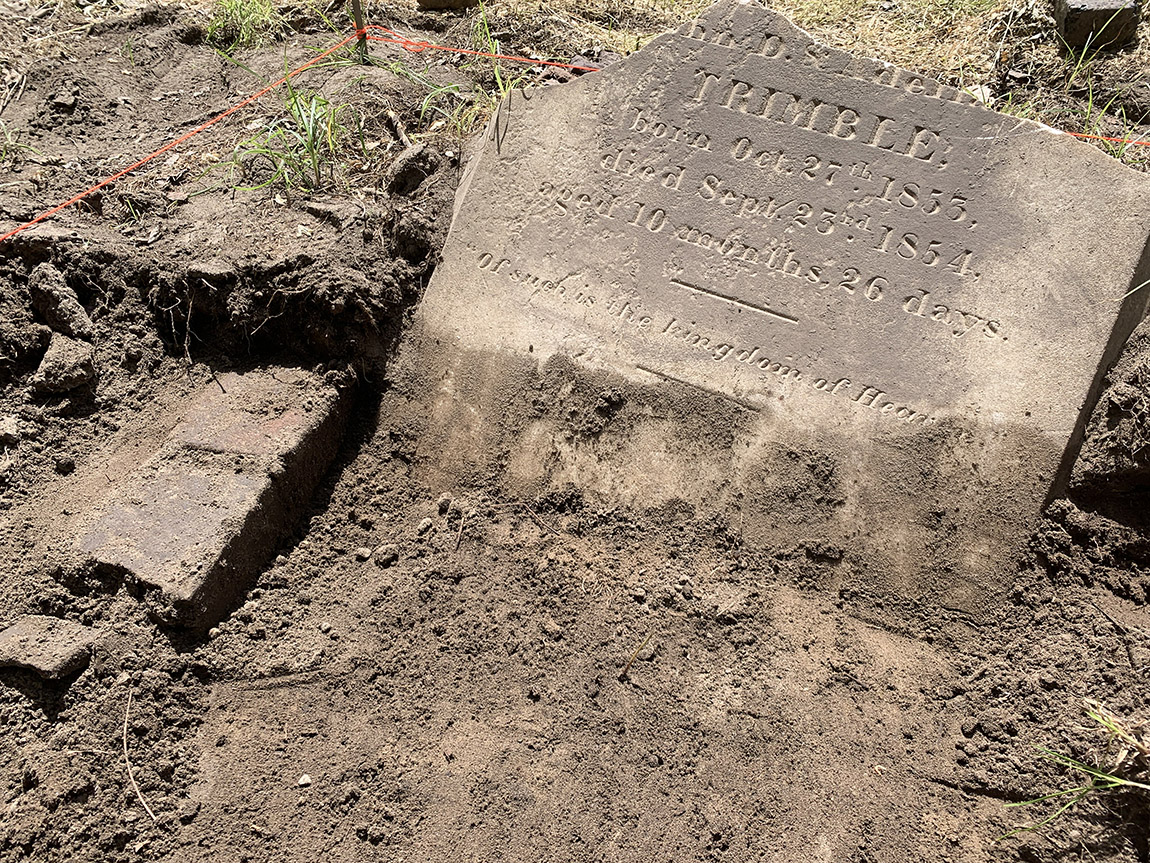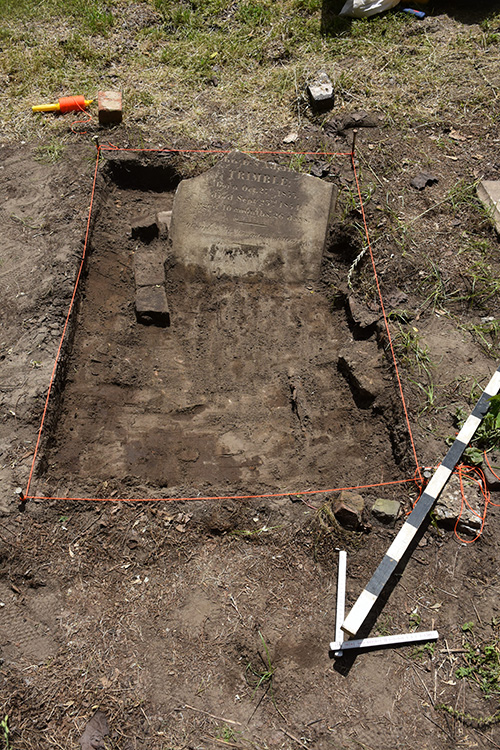
Carl G. Drexler, SAU Research Station, Arkansas Archeological Survey
Feature of the Month - March 2022
One of the many historic homes in Washington, Arkansas is the Trimble House, a stately home perched on a hill on the town’s west side. It is a place that the Trimble family could take joy in when it was built in the 1850s. But behind the house, we find our Feature of the Month, which is a tragic reminder of the realities of life in Arkansas at the time.

Waitsell Williams Trimble was born October 27, 1853, to John D. and Adelia A. Trimble. She was their fifth child, and third daughter. The world she was born into was one where many of the advancements of medical care and public health that we embrace today had yet to be made. In 1850, the United States had an infant mortality rate of 216.8 for white children and 340.3 for black children (Haines n.d.), meaning 21.6% and 34.0%, respectively, of all children born never lived to their fourth birthday. That is 27 and 42 times higher than what Arkansas has today, which is 8.1 per 1,000 live births of all children.
W.W. Trimble was one of the unfortunates, and passed away on September 23, 1854, at the too-young age of 10 months and 26 days. Her death notice appeared in the Washington Telegraph a few days later, bearing no explanation for her passing, but including a passage from Alice Cary’s poem, “April,” remarking:
Even for the dead I will not bind my soul to grief, death cannot long divide;
For it is not as if the rose had climbed my garden wall and blossomed on the other side.
Her parents laid her to rest behind the house and marked her grave with an ornate headstone. Her mother continued to live there until her passing in 1889, and her surviving children kept the house in the family until it was transferred to the Pioneer Washington Restoration Foundation in 1980 (Anonymous n.d.; Talley 1991:13). At some point, Waitsell’s headstone fell over and was covered by grass and soil.
In 2020, members of the Pioneer Washington Restoration Foundation found the headstone while clearing behind the Trimble House and asked the SAU Station of the Arkansas Archeological Survey to see if there was a grave there, or if someone had brought it from somewhere else.
We conducted a one-day dig in April 2021 and found, just beneath the grass, the grave’s intact brick lining, which told us that the grave was there and little Waitsell still rested behind the house. The bricks and headstone point to how important it was to the family that her place be marked and remembered, betokening their love for her and the sadness of her passing.
This short archeological project identified a feature that both ties us to the past and highlights one of the terrors for all families at the time. When one child in five dies before their fourth birthday, every sickness, every chill, and every sign of illness must have been a huge cause for worry. This feature bridges us to that experience.
References
Anonymous
n.d. John Dyer Trimble. Manuscript on file, Historic Washington State Park, Washington, Arkansas.
Haines, Michael
n.d. Fertility and Mortality in the United States. Electronic resource. http://www.eh.net/encyclopedia/fertility-and-mortality-in-the-united-states/. Accessed 01/15/2022.
Talley, Ed
1991 The Trimble House – Through Four Generations. Arkansas Preservation, Winter 1991:10-14
Feature of the Month Series
Archeological features are elements or structures that are nonportable or cannot be easily removed from a site (such as a wall or a post hole). Archeologists document archeological features extensively in the field to record what will otherwise be destroyed in the process of excavation. The records of these features are often all that is left at the end of an excavation. Excellent record keeping is necessary for these features to provide insight into the archeological record and site formation.
In this series, we present interesting and important archeological features that have helped archeologists to better or more fully understand the sites on which they were working. New features will be added monthly. Find the list of features here.
